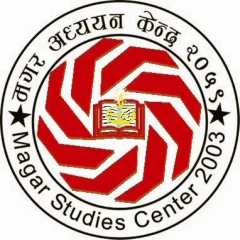Philippe Ramirez (ed.), Susan Keyes (trans.). (2000). Resunga, The
Mountain of the Horned Sage: Two Districts in Central Nepal.
Kathmandu: Himal Books.
Annotation by: Dr. Min Shris Magar
Based on a large ‘pluridisciplinary’ field study in Gulmi and Arghakhanchi districts from 1985 to 1993, this edited volume contains nine chapters, ranging from population, topography, history, natural resources, and politics. This book’s value lies in the study of
Magars and their surroundings, one of the most highly ‘sankritised’ of indigenous groups but the process of which has not been studied well. The Magars from these two districts, least studied of the Magars, form the boundary between two other Magar sub-divisions of Dhut-Magar speakers of the Gandaki region and Kham-Magar speakers of Rukum-
Pyuthan-Rolpa regions. Four chapters from the book are of particular interests in terms of their engagement on the Magars in the two districts. The chapter on ‘The Populations of Gulmi and Argha-Khanci’ by Jest et al presents their spatial distribution, lifestyle, traditions and notes that Magar is only spoken in one place in the entire region, Eksing of
Gulmi, which is supposed to be different from the dialects spoken in either Palpa-Syanja, two adjoining districts, or Kham-Magar language. This chapter is notable for its focus on markers of Hinduisation of Magars. The chapter ‘From the Principality to the Nation-state: Gulmi, Argha-Khanci and the Gandaki Kingdons’ by Phillippe Ramirez traces
the historical kingdoms and principalities in the two districts before Gorkhali conquest and notes the presence of Magars kings in the area. This has been taken up by Marie Lecomte-Tilouine in ‘The Two Kings of Musikot’, where primacy of a Magar clan in Dashain rituals is taken as their ancient origin in the area. The chapter From the Mine to the Fields: The History of the Exploitation of the Slope in Darling explores the settlement history and patterns in the area and resource exploitation, especially mining of copper in Darling, one of the baisi khani (22 mines) where Magars and Kami were the active miners (agri) and smelters respectively. Other chapters are notable for their depiction of livelihood practices of various groups.
